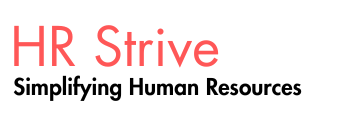Feedback is a powerful tool that keeps communication flowing and effective. In any conversation, there can be distractions, misunderstandings, or assumptions—this is often referred to as "noise." Feedback helps cut through that noise by giving the sender a way to confirm that their message was truly understood. It bridges the gap between intention and interpretation.
How to Give Meaningful Feedback
Whether you’re speaking to your boss, a colleague, or someone you supervise, the key to useful feedback is timing and clarity. Delayed feedback tends to lose its impact, and vague statements often leave the receiver confused. That’s why it’s essential to be specific and emotionally aware.
Before giving feedback, take a moment to prepare. Know exactly why you're giving it, have examples ready, and be mindful of the other person’s emotional state. If too much time has passed, not only do details fade, but the opportunity to influence behavior might be lost. For instance, if a manager mishandles employee discipline and no one says anything, the consequences could escalate—ranging from low morale and staff turnover to formal grievances.
Effective feedback focuses on what actually happened. Rather than saying, “You always interrupt,” say, “I noticed during today’s meeting you spoke over others a few times, and they seemed frustrated.” This kind of observation feels more grounded and less accusatory—and it’s more likely to be received constructively.
Handling Difficult Conversations: Corrective Feedback
Delivering critical or corrective feedback is often emotionally charged. Even when someone asks for honest input, they usually hope to hear praise. When feedback is negative, people sometimes reject it and seek validation elsewhere—especially when their connection to the workplace is weak.
That’s why it’s crucial to deliver corrective feedback within a context of respect and value. If employees feel recognized and supported, they’re more open to hearing what needs to change.
One useful strategy is to frame feedback as part of a bigger picture. Rather than just pointing out flaws, help the person understand how making adjustments can lead to growth—for themselves and for the team. HR professionals can use storytelling to show that others have faced similar challenges and overcome them. This approach builds empathy and normalizes the process of learning from feedback.
It’s a common belief that wrapping negative feedback between two compliments makes it easier to hear—but research shows this often doesn’t help. What does work is asking the person about their own goals first. Once they’ve shared their aspirations, you can connect the feedback to obstacles that may be getting in the way. For example, if someone wants their presentation to inspire action, you might suggest ways to clarify the message or improve their delivery to better reach that goal.
Being Open to Feedback
Feedback isn’t just something to give—it’s something to seek out and embrace. Regularly asking for feedback helps us uncover blind spots, correct misunderstandings, and improve as professionals and teammates.
Here are some tips to make the most of receiving feedback:
-
Know what you’re looking for. Don’t just ask anyone—seek feedback from someone who can offer valuable insight on the specific issue you want to improve.
-
Ask soon after the event. Feedback works best when it’s fresh—memories are clearer and examples are easier to discuss.
-
Be present and listen. Avoid getting defensive. Ask clarifying questions and take time to reflect afterward.
-
Appreciate the input. Even if you disagree or the feedback is based on a misunderstanding, thank the person for their perspective. If needed, gently correct any incorrect assumptions.
-
Circle back. After applying their suggestions, let the person know how it went. It shows you value their input and helps strengthen the relationship.

No comments:
Post a Comment